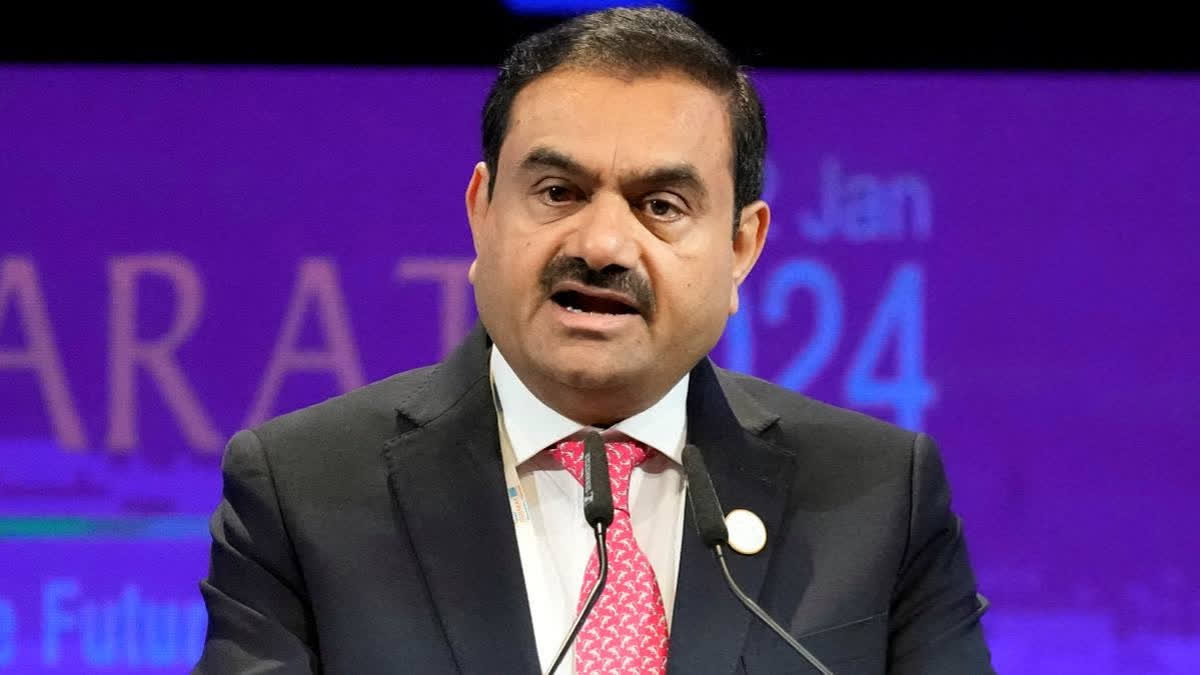New York:The USD 265 million bribery charge in the US against Gautam Adani raises the issue of extraterritorial application of American laws since the Indian tycoon and others involved in the case do not live here, an Indian-American attorney has said.
“While our domestic laws remain the same, a preliminary issue arises about extraterritoriality application of US laws,” prominent attorney Ravi Batra told PTI. The US authorities have indicted Gautam and seven others including his nephew Sagar Adani, for being part of an alleged USD 265 million bribery scheme.
Batra noted that as US Chief Justice John Roberts ruled long ago, extraterritoriality is disfavoured in the comity of nations and hence comes with a presumption against it, “no matter if its our criminal or civil laws that appear violated. Anything else would lead to chaos in the rule of law.” Batra added that if the complaint of conduct is “of and concerning the United States,” then it is proper to prosecute criminal charges and civil claims.
“As to the civil case by the US Securities and Exchange Commission (SEC), like any other civil plaintiff, it must first serve its summons and complaint upon the defendants, and then they will have adequate time to answer the complaint, or if they prefer, move to dismiss the complaint or charges based upon the presumption against extraterritoriality or irrefutable proof that the complaint does not plead a plausible case,” Batra said.
Last week, a five-count criminal indictment uwas nsealed in federal court in Brooklyn charging Gautam, Sagar and Vneet Jaain, executives of an Indian renewable-energy company with conspiracies to commit securities and wire fraud and substantive securities fraud for their roles in a multi-billion-dollar scheme.
This was done to obtain funds from US investors and global financial institutions on the basis of false and misleading statements. The indictment also charges Ranjit Gupta and Rupesh Agarwal, former executives of a renewable-energy company with securities that had traded on the New York Stock Exchange.
And Cyril Cabanes, Saurabh Agarwal and Deepak Malhotra, former employees of a Canadian institutional investor, with conspiracy to violate the Foreign Corrupt Practices Act in connection with a bribery scheme also perpetrated by Gautam Adani, Sagar Adani and Jaain involving one of the world’s largest solar energy projects.
The indictment further alleged that Cabanes, Saurabh, Malhotra and Rupesh conspired to obstruct the grand jury, FBI and US SEC investigations into the Bribery Scheme.
According to information on the website of United States Courts, a grand jury focuses on “preliminary criminal matters only” and “assesses evidence presented by a prosecutor to determine whether there is “probable cause” to believe an individual committed a crime and should be put on trial.
“If the grand jury determines there is enough evidence, an indictment will be issued against the individual,” it said. A grand jury consists of 16-23 grand jurors and its proceedings are private. The Grand jurors consider multiple cases over the course of their term of service.
According to information in a handbook for federal grand jurors, the powers and functions of the federal grand jury differ from those of the federal trial jury, which is called the petit jury. “The petit jury listens to the evidence offered by the prosecution and the defence (if it chooses to offer any) during a criminal trial and returns a verdict of guilty or not guilty,” it said.
The grand jury, on the other hand, “does not determine guilt or innocence, but only whether there is probable cause to believe that a crime was committed and that a specific person or persons committed it.
If the grand jury finds that probable cause exists against a person suspected of having committed the crime, then it will return a written statement of the charges called an “indictment.” After that, the person will go to trial.” As per rules, the grand jury “normally hears only that evidence presented by a government attorney, which tends to show the commission of a crime.
“The government attorney usually is the United States Attorney or an Assistant United States Attorney in the federal district. The grand jury must determine from this evidence, and usually without hearing evidence for the defence, whether the person being investigated by the government should be tried for a serious federal crime,” the handbook said.
It added that according to federal law requirements, a grand jury must be selected at random from a fair cross-section of the community in the district or division in which the federal grand jury convenes. Thus, all citizens have an equal opportunity and obligation to serve.
The names of prospective grand jurors are drawn at random from lists of registered voters or lists of actual voters, or other sources when necessary, under procedures designed to ensure that all groups in the community will have a fair chance to serve, the handbook states.
According to records filed in the court for the Eastern District of New York, Adani and Sagar have been asked to respond to the charges levelled by the SEC. “Within 21 days after service of this summons on you (not counting the day you received it)... you must serve on the plaintiff an answer to the attached complaint...”
“If you fail to respond, judgment by default will be entered against you for the relief demanded in the complaint. You also must file your answer or motion with the court,” the summons reads.
“If you fail to respond, judgment by default will be entered against you for the relief demanded in the complaint. You also must file your answer or motion with the court,” the summons reads.
